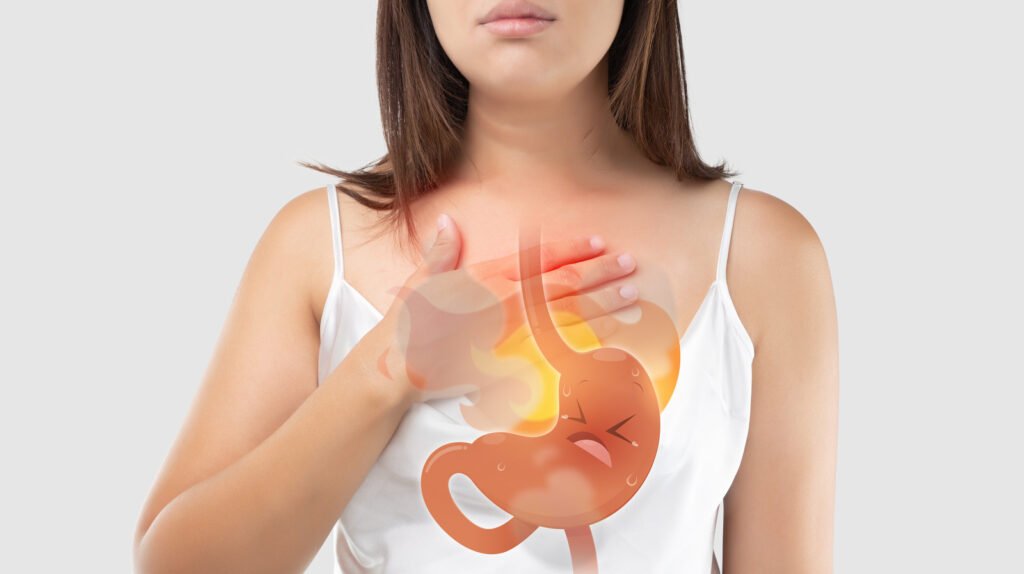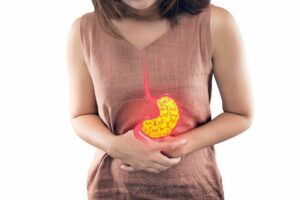Acid reflux, a condition that affects millions of people worldwide, is often associated with the uncomfortable burning sensation in the chest and throat known as heartburn. However, many individuals may be surprised to learn that acid reflux can also manifest as back pain. In this article, we will delve into the relationship between acid reflux and back pain, exploring its causes, symptoms, and management options.
Contents
Understanding Acid Reflux

Acid reflux, medically termed gastroesophageal reflux disease (GERD), occurs when stomach acid flows back into the esophagus, causing irritation and inflammation. Common symptoms include heartburn, regurgitation, and difficulty swallowing. It is crucial to recognize the signs of acid reflux to differentiate it from other health issues.
Acid reflux can be classified into various types based on its causes and symptoms. Understanding these distinctions can help individuals identify their specific conditions and seek appropriate treatment.
The Link Between Acid Reflux and Back Pain
Acid reflux, also known as gastroesophageal reflux disease (GERD), is a condition where stomach acid flows back into the esophagus, causing irritation and inflammation. While acid reflux is primarily associated with symptoms such as heartburn, regurgitation, and chest discomfort, it can sometimes be linked to back pain as well.
However, the relationship between acid reflux and back pain is not well-understood and can vary from person to person. Here are some possible ways in which acid reflux could be connected to back pain:
- Nerve irritation: The esophagus and the back are closely located in the body. The irritation and inflammation caused by stomach acid refluxing into the esophagus might irritate nearby nerves that also extend into the back, leading to back pain.
- Muscle tension: Acid reflux can cause discomfort and pain, leading some individuals to unconsciously tense their back muscles in response. Chronic muscle tension can eventually lead to back pain.
- Esophageal spasm: In some cases, acid reflux can trigger esophageal spasms, which are painful contractions of the esophagus. These spasms may radiate to the back and cause back pain.
- Hiatal hernia: A hiatal hernia occurs when part of the stomach protrudes through the diaphragm into the chest cavity. This condition is associated with a higher risk of acid reflux. The pain from a hiatal hernia may be felt both in the chest and the back.
- Referral pain: Sometimes, pain originating from the esophagus due to acid reflux can be felt in different areas of the body, including the back. This phenomenon is called “referred pain.”
Diagnosing Acid Reflux and Back Pain
Diagnosing the link between acid reflux and back pain involves a comprehensive evaluation by a healthcare professional. It is essential to determine whether the back pain is directly related to acid reflux or if there are other underlying causes for the symptoms. Here’s what you can expect during the diagnostic process:
- Medical history: The doctor will start by taking a detailed medical history, including your symptoms, the frequency and intensity of back pain and acid reflux, and any factors that worsen or alleviate the symptoms.
- Physical examination: A thorough physical examination will be conducted to assess your overall health and look for any signs of inflammation or tenderness in the back and abdomen.
- Symptom association: The doctor will inquire about the timing of your back pain and acid reflux symptoms to see if there is any correlation. For example, whether the back pain tends to occur along with acid reflux episodes.
- Imaging tests: In some cases, the doctor may order imaging tests such as X-rays, CT scans, or MRI to rule out other potential causes of back pain, such as spinal issues or herniated discs.
- Endoscopy: If the doctor suspects acid reflux, they may recommend an upper endoscopy. During this procedure, a thin, flexible tube with a camera on its end (endoscope) is passed through the mouth and into the esophagus and stomach to examine the lining for inflammation and signs of acid reflux.
Treating Acid Reflux

The treatment of acid reflux, or gastroesophageal reflux disease (GERD), typically involves a combination of lifestyle changes, medication, and in some cases, surgery. The primary goals of treatment are to alleviate symptoms, heal any damage to the esophagus, and prevent complications. Here are some common approaches to treating acid reflux:
Surgery
If lifestyle modifications and medications do not effectively manage acid reflux, surgical options may be considered. The most common surgical procedure for GERD is laparoscopic Nissen fundoplication, in which the upper part of the stomach is wrapped around the LES to reinforce it and prevent reflux.
Managing complications
If acid reflux has led to complications such as esophagitis (inflammation of the esophagus), strictures (narrowing of the esophagus), Barrett’s esophagus (pre-cancerous changes in the esophageal lining), or respiratory symptoms, additional treatments may be required to address these issues.
Medications
- Antacids: Over-the-counter antacids can provide quick relief by neutralizing stomach acid. However, they only offer temporary relief and are not suitable for long-term use.
- H2 blockers: Histamine H2-receptor blockers, such as ranitidine and famotidine, reduce the production of stomach acid and can provide longer-lasting relief.
- Proton pump inhibitors (PPIs): PPIs like omeprazole, lansoprazole, and pantoprazole are powerful medications that block acid production, allowing the esophagus to heal. They are usually taken on a short-term basis, but prolonged use should be monitored by a healthcare professional.
- Prokinetics: These medications help improve the movement of food through the digestive system, reducing the risk of acid reflux.
Acid Reflux in Pregnancy and Its Effects on Back Pain
Acid reflux is a common issue during pregnancy, particularly in the later stages, due to hormonal changes and the physical pressure exerted by the growing uterus on the stomach. Pregnancy hormones, such as progesterone, can relax the lower esophageal sphincter (LES), the muscle responsible for keeping stomach acid from flowing back into the esophagus. This relaxation can lead to an increased incidence of acid reflux.
The effects of acid reflux during pregnancy on back pain can be twofold:
- Direct impact on back pain: Some pregnant individuals may experience back pain directly related to acid reflux. When stomach acid flows back into the esophagus, it can irritate nearby nerves, causing discomfort that may radiate to the back. This can contribute to generalized back pain or pain in the upper back region.
- Indirect impact on back pain: The physical discomfort and burning sensation caused by acid reflux can lead to changes in posture and body mechanics. Pregnant individuals may unconsciously alter their posture to seek relief, leading to increased strain on the back muscles and potentially resulting in back pain.
Additionally, during pregnancy, the body undergoes significant changes to accommodate the growing baby, including shifts in the center of gravity, changes in ligaments, and increased pressure on the lower back. These changes can also contribute to back pain, which may be compounded if acid reflux symptoms are present.
Preventing Acid Reflux in Pregnancy

To manage acid reflux during pregnancy and potentially reduce its impact on back pain, consider the following tips:
- Dietary adjustments: Avoid trigger foods that can exacerbate acid reflux, such as spicy and fatty foods. Opt for smaller, more frequent meals to ease digestion.
- Elevate the upper body: Raise the head of your bed or use extra pillows to elevate your upper body while sleeping, which can help reduce acid reflux during the night.
- Maintain proper posture: Pay attention to your posture during daily activities to minimize strain on your back. Practice good body mechanics when lifting objects.
- Wear loose-fitting clothing: Tight clothing, especially around the abdomen, can increase pressure on the stomach and worsen acid reflux symptoms.
- Stay upright after eating: Avoid lying down immediately after meals to allow gravity to aid in digestion and reduce the likelihood of acid reflux.
- Stay hydrated: Drink plenty of water between meals, but avoid drinking large amounts during meals, as it can increase stomach pressure and exacerbate reflux.
- Consult your healthcare provider: If you are experiencing significant acid reflux or back pain during pregnancy, talk to your healthcare provider. They can offer guidance on managing symptoms and may recommend safe medications if necessary.
Remember that pregnancy is a unique and sensitive period, so always consult your healthcare provider before starting any new treatment or making significant changes to your routine. They can help tailor a plan that suits your individual needs and ensures the health and well-being of both you and your baby.
Conclusion
In conclusion, acid reflux and back pain are intertwined through shared nerve pathways, leading to referred pain and discomfort. Recognizing the symptoms and triggers of acid reflux is crucial for timely diagnosis and appropriate treatment. By adopting lifestyle changes, seeking medical advice, and understanding the connection between acid reflux and back pain, individuals can improve their quality of life and alleviate discomfort.
If you’re experiencing Back pain, physical therapy for back pain at PhysioMantra can help: Book an online physical therapy session.



